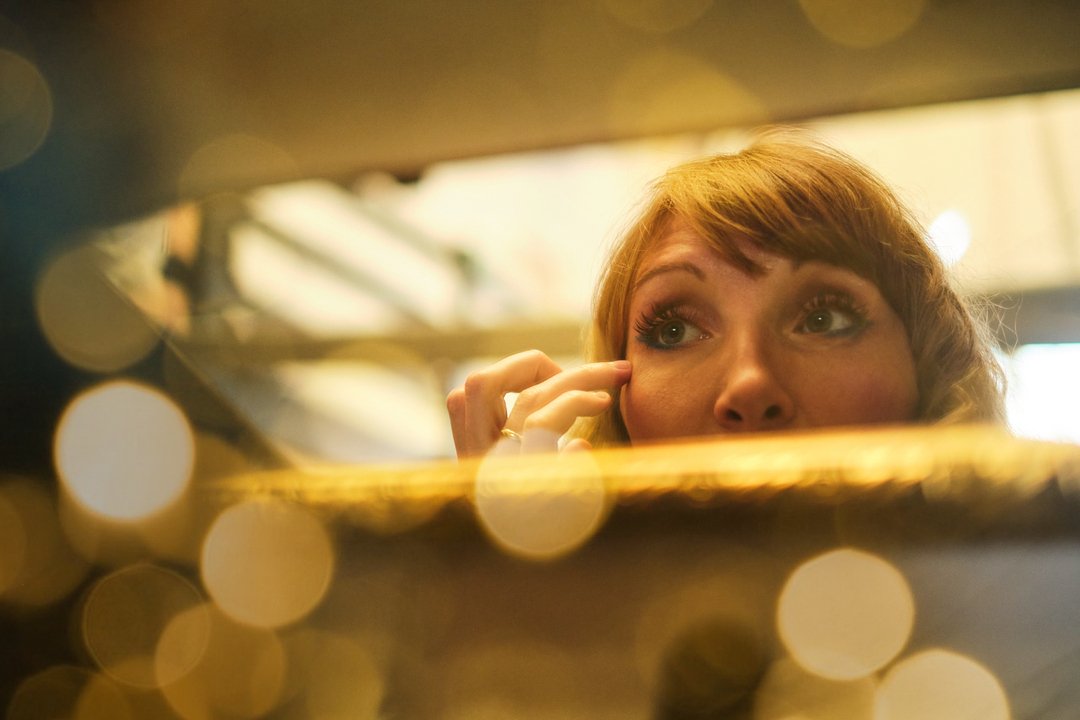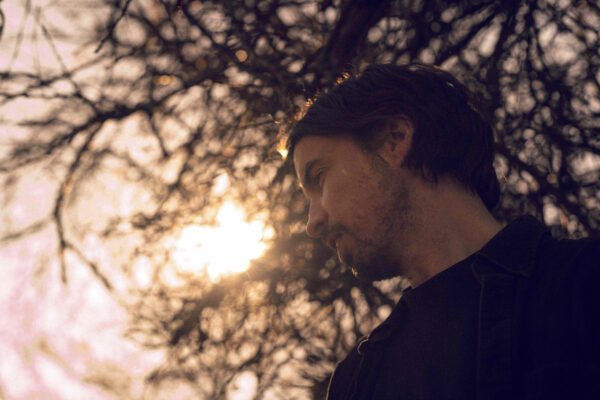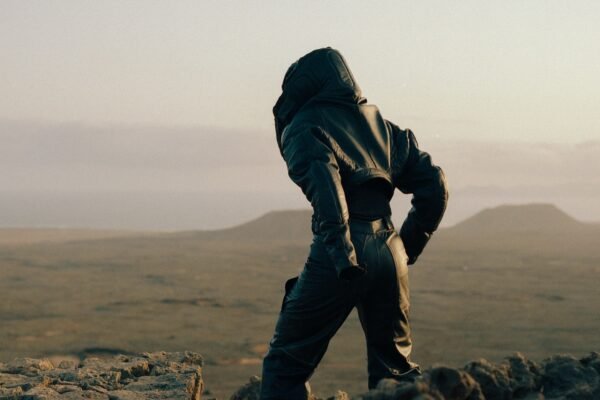Hi! The funeral that inspired “People I Don’t Know” is such a moving starting point. Can you tell us more about that day and how it shaped the song’s narrative?
A: Hey! Strangely, the song is about that day and at the same time, it is not. In its shape, it loosely follows the events of that day – from members of the funeral congregation meeting at a pub to the ceremonious entrance to the large ship of a church, pregnant with tearful people, solemn song and candle light – yet, it is about much more than that. It is about the capacity of humans to form an instant community in moments of great loss or suffering. It’s about a stranger reaching out to provide a small gesture of comfort and the ritual of mourning and celebrating a loved one in the safe embrace of a community. It strongly draws on the essence and roots of human shared living and in this, drew me in closely to the depth of my feeling. It provided a never-known comfort and reassurance to me that somehow, things would be fine; that whatever happens, I shan’t be alone. It was beautiful and profound.
The song has two distinct sections — the awkwardness and the collective ritual. How did you approach capturing those transitions musically?
A: I guess, I kept it quite simple. The space, as in the literal room of a pub, with its carpets and low ceiling, feels and sounds very warm and dense. We used a small, close reverb to emulate that and to make the voices feel intimate. The church however, had a grand acoustic in which the choral voices floated angelically. Gonçalo Abrantes, my friend and producer, suggested we listen to a set of reverbs that emulate some of the most grand cathedrals in the UK. I believe we went for Manchester Cathedral’s reverb that fazes in as the voice canon cascades, and thus provides the transition between the spaces.
In what ways did the experience of being both an observer and participant in the ceremony influence the vocal delivery of the track?
A: The experience felt both deeply personal as well as universal, which allowed me to stay intensely connected to my inner world as well as staying open and communicative with my environment when recording the vocals. It is therefore also a powerful song to share live with an audience.
Your collaboration with cellist Stephanie Tress on this track adds a haunting dimension. How did that partnership come about, and how did it influence the final sound?
A: Stephanie and her partner are dear friends of my husband and I. In fact, her partner Will Newell featured on violin on my last release MESSENGERS. Steph and Will are part of the renowned Solem Quartet. I felt very lucky that Steph was able to fit my recording session into their busy touring schedule. We recorded just the two of us in my apartment. Steph was kind to allow us to experiment with the cello parts. I hadn’t written anything in particular, but I had a strong reference of what it should sound and feel like. The cello draws on violin recordings of the song Gloomy Sunday (org. title Szomorú Vasárnap) by Hungarian pianist and composer Seress Rezső written in 1933. It was dubbed the ‘Hungarian suicide song’ since urban legend claims that many people took their own life listening to it as a result of the despair caused by WW1 and the tension soaring in Europe leading up to WW2. The old violin recording of the song particularly stuck with me since I had watched a related film as a teenager, and the sound started to strongly attach itself to PEOPLE I DON’T KNOW during recording and production. Steph did a wonderful job, tapping into the emotive world of Gloomy Sunday and improvised some heartfelt dramatic solo lines that very much define the ending of my song.
The lyrics of “People I Don’t Know” seem to weave personal and communal experiences together. How do you balance vulnerability and universality in your songwriting?
A: I believe that so much in our human experience is shared and relatable, against the divide that political and societal forces try to constantly convince us off. So, the more genuine I can express and share my own experience, the more will listeners see themselves reflected in my music. I hope it allows them to connect to themselves and encourage them to share that truth outwards, be seen and feel connected.
The song was created in a single, intense session. How did working under such immediate conditions impact the creative process?
A: I love creating in this way. It’s like a flood of emotion that washes out of you. I find the result of that work is often more genuine and powerful than work that I have ‘sat down to compose’. It is a lot more intuitive and perhaps, a bit more rough on the edges. But rough is good. I have come to love music that is not too overproduced and takes itself too seriously. I certainly have been very strict with my creative process in the past and it used to hold me back from finishing pieces. Who really cares if a note was played ‘perfectly’ if it is delivered with truth, vigour or fragility? This piece is an example of the work that most speaks to me and, I hope, to others.
Your previous EP, “Messengers,” leaned heavily on expansive, improvised textures, while this new single embraces a more structured melody. What prompted this shift in your musical approach?
A: It was not perse a shift in musical approach, but more a different nuance. For MESSENGERS I had written the complete poem that became the lyrics and simply improvised a forward flowing melody into the mic. Forward flowing as in, it never repeated itself, but continued to weave aimlessly forward.
PEOPLE I DON’T KNOW was written out of a writing prompt from a songwriting workshop that had a strict time limit and was supposed to be melody, chords and lyrics created in tandem. I think this made me move closer to traditional song form without having deliberately chosen to do so.
My works generally flow between pieces that were entirely improvised in a recording session to pieces that were through-composed, with some using lyrics and others just deploying syllables and vocal sounds. There is a whole spectrum from structure to wilderness, which I love to play with.
The artwork by Giulia Cavallini beautifully complements your music. How important is visual art to your overall artistic vision?
A: To be honest, I am not very strong with creating visual ideas for my music. I can tell you what it feels like, the texture, the sound – but visuals are hard for me. All-the-more I enjoy working with Giulia, whose style sits somewhere between contemporary art and the magic of fairy tales, and who does a brilliant job in bringing to paper what I have shared with her out of my ‘Kopf-Kino’ (cinema of the mind). I can’t wait to see what she is going to come up with next.
Giulia has also helped me develop a universal visual language that carries through my releases. It is something that I have always enjoyed in other artists’ output and that helps to tie my body of work together.
Working with producer Gonçalo Abrantes again, what has this ongoing collaboration brought to your sound?
A: Working with Gon is such a joy. He is this gentle, intuitive creature backed up with a hell-of-a-lot of know-how. Both my work and my artistic vision are always well perceived by him, because he takes the time to listen intently before starting to add ideas. That is so important for an artist collaboration and allows my initial artistic vision to remain intact. On top of that, Gon always has some brilliant new tool that adds an extra layer of depth or colour. Something that I could have never thought of, but once it is there, you cannot imagine the track without. Being a vocalist himself, Gon also has a great sensibility when mixing and producing vocals. As I said, a joy!
What message or feeling do you hope listeners take away from “People I Don’t Know”?
A: I’d like people to believe that no matter how bad things may get, if you can bring yourself to look up, there will be people there willing to support you. You may find them in the most unexpected corners. So do look up and stay connected!
Listening to songs so you don’t have to! Just kidding :D, you totally should. Music blogger by day, nurse by night





